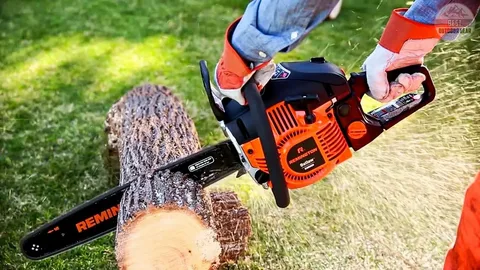The chainsaw is a tool most people associate with lumberjacks, firewood, and forest work. However, few realize its origins lie not in the woods, but in medicine. The history of the chainsaw: from medical tool to forest essential, is a fascinating journey that highlights human ingenuity and the evolution of technology in response to changing needs.
Origins in Surgery
The earliest version of the chainsaw was invented in the late 18th century—not for cutting trees, but for assisting childbirth. Before the advent of cesarean sections, difficult births were sometimes managed with a procedure called symphysiotomy, which involved removing parts of the pelvic bone to enlarge the birth canal. To make this process quicker and more precise, two Scottish doctors, John Aitken and James Jeffray, developed a hand-cranked chainsaw in the 1780s. This small, fine-toothed instrument looked more like a modern-day bicycle chain and was used to cut bone.
Though primitive by today’s standards, this invention marks the beginning of the history of the chainsaw: from medical tool to forest essential.
Industrial Evolution and Timber Use
By the 19th century, technological advancements allowed for the adaptation of the chainsaw from a medical device to an industrial tool. The first powered chainsaws appeared in the early 20th century. In 1926, German company Stihl developed the first electric chainsaw, followed shortly by gas-powered models. These early machines were large, heavy, and required two people to operate.
However, their ability to rapidly fell trees revolutionized the logging industry. With these new tools, workers could complete tasks in hours that had once taken days, significantly increasing efficiency in the timber trade.
The Modern Chainsaw
Throughout the mid-to-late 20th century, chainsaws continued to evolve. They became lighter, more powerful, and safer to use. Innovations like anti-vibration systems, automatic oilers, and safety chains made them more user-friendly. The shift from medical use to industrial necessity was now complete.
In modern times, the chainsaw is a standard tool in forestry, landscaping, construction, and even art—used in ice and wood sculpting. The transition reflects the history of the chainsaw: from medical tool to forest essential, with the tool finding relevance in a wide range of fields.
Legacy and Cultural Impact
Today, chainsaws are iconic symbols of power tools and outdoor work. They’ve also become fixtures in pop culture, appearing in movies, horror stories, and video games. But beyond the dramatics lies a real history rooted in human need and mechanical innovation.
Understanding the history of the chainsaw: from medical tool to forest essential reminds us how tools can evolve drastically over time—meeting new demands and shaping industries in unexpected ways.

